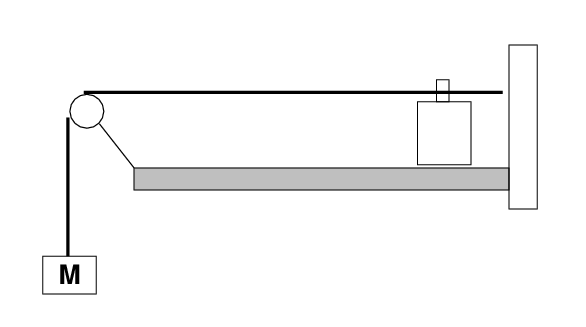
 Copyright © Michael Richmond.
This work is licensed under a Creative Commons License.
Copyright © Michael Richmond.
This work is licensed under a Creative Commons License.

At the front of the room is a device similar to that shown in the diagram above. It consists of
If we set the frequency of the motor to some random value, then even though it pushes and pulls the string, there is very little apparent motion.
Watch as a random frequency leads to ... not much
But if we choose just the right frequency, we can cause the string to oscillate up-and-down with a considerable amplitude.
Watch as one particular frequency leads to big oscillations
The questions are --- why do some frequencies create big oscillations? and just what are those special frequencies?
I'll answer the first question, but you will have to answer the second.
Let's begin with the motor turned off, so that the string is motionless -- though it does remain under tension T. The length of the string, from the motor to the pulley, is L.
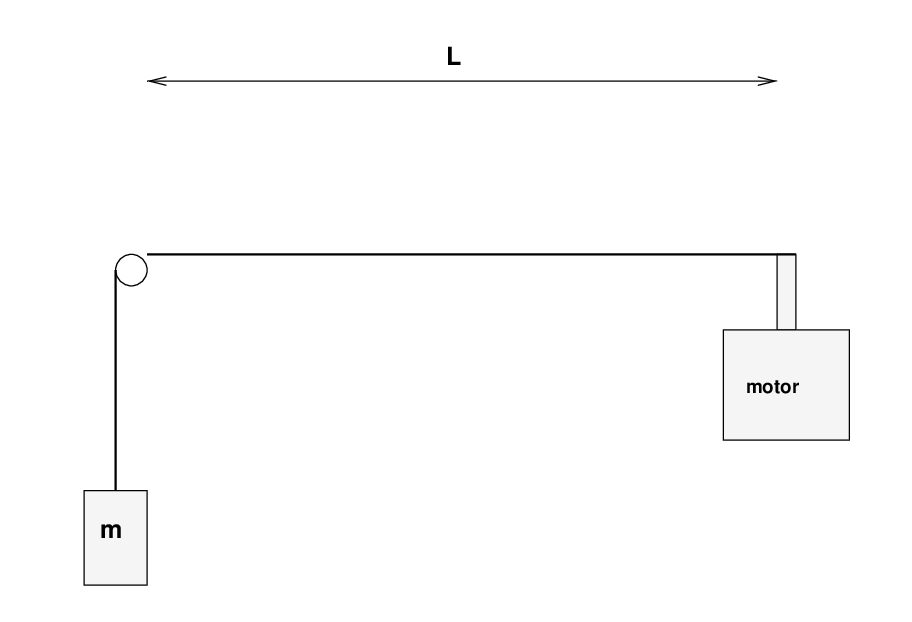
Now, at time t = 0, we turn on the motor. It starts to move up and down with frequency f. The period of oscillation is
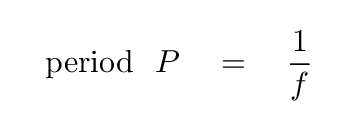
The small rod attached to the motor pushes the string as it moves up and down, creating a disturbance that starts moving to the left.


This wave will take a time

When the wave reaches the pulley, it bounces off and sends a reflected version of the wave travelling back toward the motor.

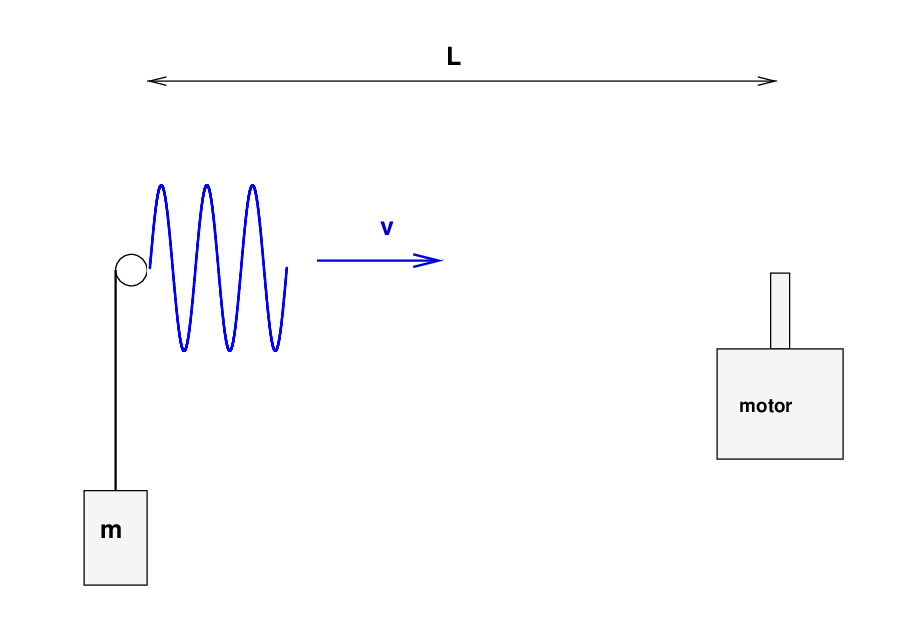
Since the reflected wave is a copy of the original wave, this trip also takes
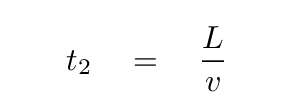
As a result, the reflected wave will return to the motor after a time

As the waves created by the motor travel to the left, and the reflected waves travel back to the right, they will pass through each other.
If -- and this is a big if -- we choose just the right frequency, then the two waves will add together to form a standing wave with a large amplitude.
So, what's the big secret? What is the reason that some frequencies will create standing waves, but most will not?
A standing wave will form if the reflected wave returns
to the motor after just as the motor is starting
another cycle. In other words,
the wave must make one round-trip journey in exactly one period,
or two periods, or 3 periods
or ... N periods.
In this setup, the length L of the string is fixed. I'll write it on the board in class. In order to find the special frequencies which will give rise to standing waves, there's one more piece of information we need: the speed of waves travelling on the string. We could compute the speed via

if we knew the tension T and linear mass density μ.
Your job: perform the work described below, scan all work and pictures if necessary, and submit a single PDF to myCourses assignment "Standing Waves on a String
length of string not under tension L0 = 1.09 m
length of string under tension L = 1.64 m
Okay! Now that you know the speed v, you can start finding those special frequencies which will yield standing waves.
Number of periods Frequency (Hz) Wavelength (m)
N f λ
-----------------------------------------------------------------------
1
2
3
4
-----------------------------------------------------------------------
Finally, for each of these frequencies, draw a picture showing the position of the string when the oscillations are at their maximum amplitude. Note that the string is held at end end, which means that it cannot move at both ends.

Write out the answers to all questions, draw all pictures, then scan everything. Submit a single PDF to
 Copyright © Michael Richmond.
This work is licensed under a Creative Commons License.
Copyright © Michael Richmond.
This work is licensed under a Creative Commons License.